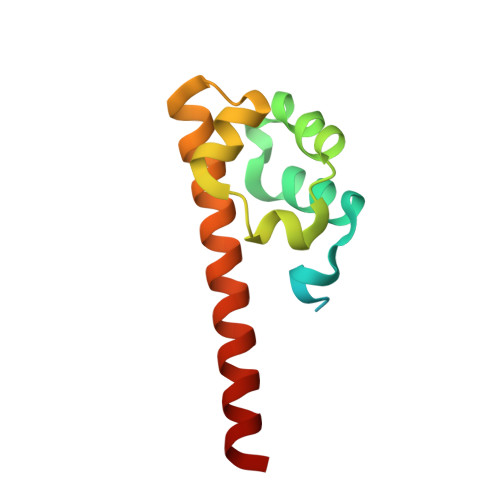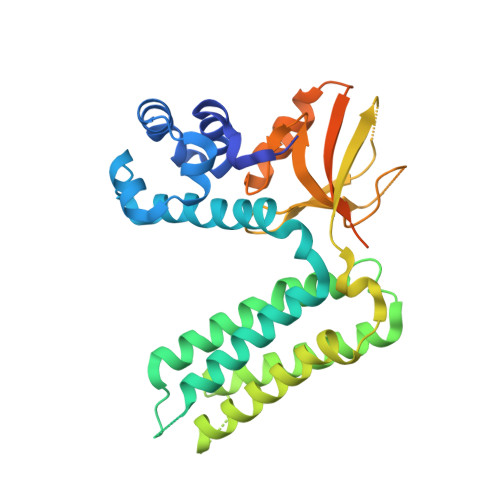The CNK-HYP scaffolding complex promotes RAF activation by enhancing KSR-MEK interaction.
Maisonneuve, P., Sahmi, M., Bergeron-Labrecque, F., Ma, X.I., Queguiner, J., Arseneault, G., Lefrancois, M., Kurinov, I., Fronzes, R., Sicheri, F., Therrien, M.(2024) Nat Struct Mol Biol 31: 1028-1038
- PubMed: 38388830
- DOI: https://doi.org/10.1038/s41594-024-01233-6
- Primary Citation of Related Structures:
8BW8, 8BW9 - PubMed Abstract:
The RAS-MAPK pathway regulates cell proliferation, differentiation and survival, and its dysregulation is associated with cancer development. The pathway minimally comprises the small GTPase RAS and the kinases RAF, MEK and ERK. Activation of RAF by RAS is notoriously intricate and remains only partially understood. There are three RAF isoforms in mammals (ARAF, BRAF and CRAF) and two related pseudokinases (KSR1 and KSR2). RAS-mediated activation of RAF depends on an allosteric mechanism driven by the dimerization of its kinase domain. Recent work on human RAFs showed that MEK binding to KSR1 promotes KSR1-BRAF heterodimerization, which leads to the phosphorylation of free MEK molecules by BRAF. Similar findings were made with the single Drosophila RAF homolog. Here we show that the fly scaffold proteins CNK and HYP stabilize the KSR-MEK interaction, which in turn enhances RAF-KSR heterodimerization and RAF activation. The cryogenic electron microscopy structure of the minimal KSR-MEK-CNK-HYP complex reveals a ring-like arrangement of the CNK-HYP complex allowing CNK to simultaneously engage KSR and MEK, thus stabilizing the binary interaction. Together, these results illuminate how CNK contributes to RAF activation by stimulating the allosteric function of KSR and highlight the diversity of mechanisms impacting RAF dimerization as well as the regulatory potential of the KSR-MEK interaction.
- Université de Bordeaux, CNRS, Bordeaux INP, CBMN, UMR 5248, IECB, F-33600, Pessac, France. p.maisonneuve@iecb.u-bordeaux.fr.
Organizational Affiliation:


















